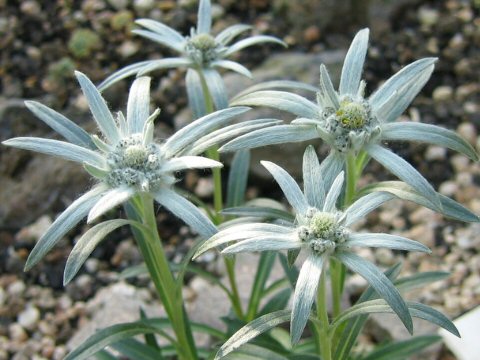 |




|

|
íªÌkC¹A»ÌÈ©Ìç¶AjØ\cRAÕR»êÉTnÉí¸©ÉªzµÄ¢Ü·BRnÌâêânɶ¦A³ÍPT`ROZ`ÉÈèÜ·BtÍæªëÁ½|âj`ÅA[bgóÉ«ܷBU©çW²ëA¢Ôð穹ܷB¢ÔÙÌæ¤É©¦éÌÍätÅASɪԪWÜèÜ·Bç¶ÌàÌÍuêÔñ¤·ä«»¤iç¶ájvÆÄÎêÜ·B
|

|
LNÈEXL\E®Ì½NÅAw¼Í Leontopodium discolorBp¼Í èܹñB
|

|
The "Ezo-usuyuki-so" (Leontopodium discolor) belongs to Asteraceae (the Aster family). It is a perennial herb that is found in Hokkaido, including Rebun Island, Mount Nipesotsu, Mount Mokoto in Japan, and a small portion of Sakhalin. It grows on rocks and grassland in mountainous areas and is 15 to 30 cm tall. It produces white flower heads from June to August. The bract leaves look like white petals, with a cluster of flower heads in the center. The one from Rebun Island is called "Rebun-usuyuki-so".
|

|
åãsß©æuçâ±ÌÔÙvÉÄA2004N0402úBeB
|



